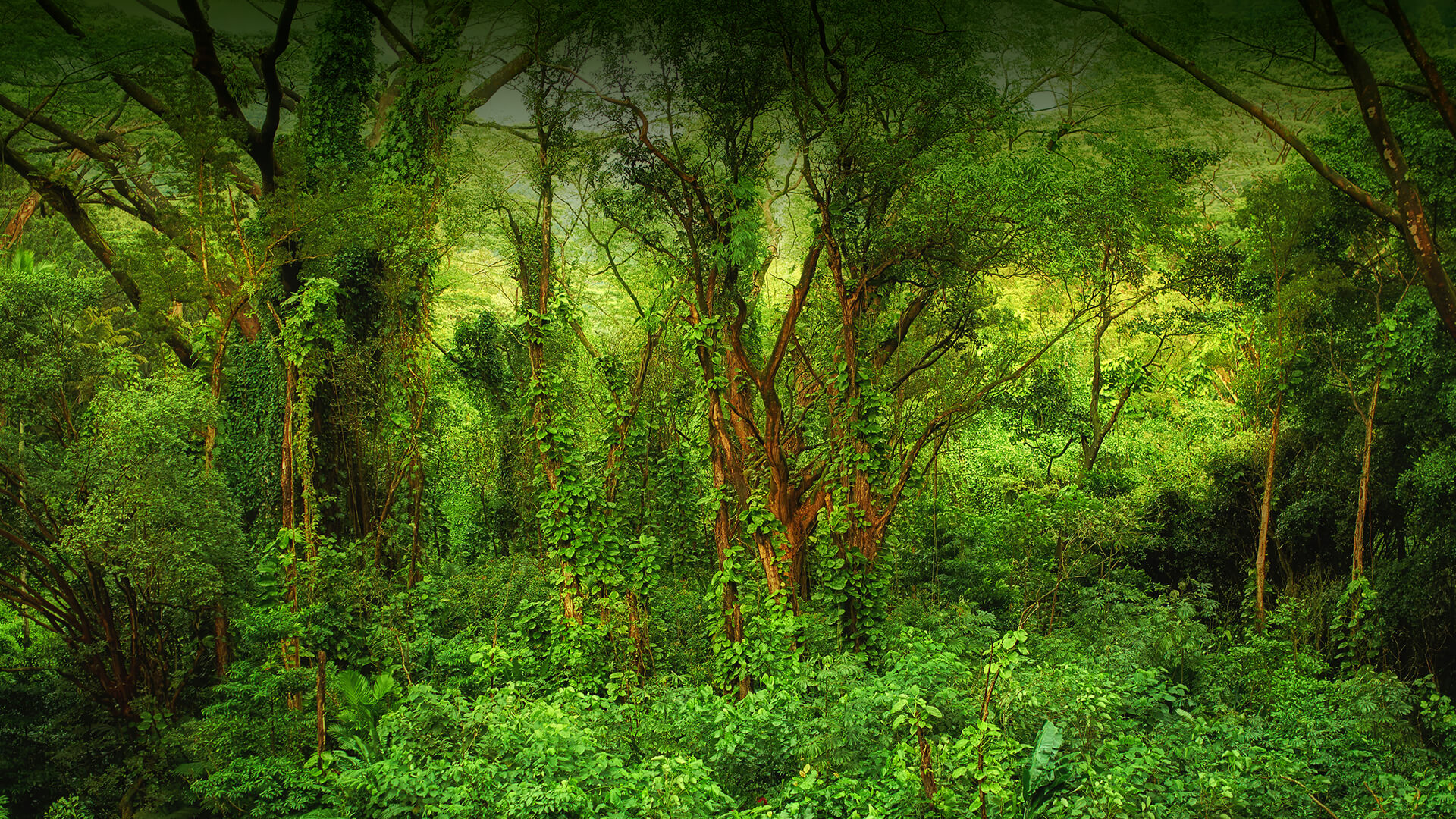
Tropical Rainforest
Tropical rainforests form a lush, green band around the equator between the two latitudinal lines of the tropics of Cancer and Capricorn. While covering less than 6 percent of Earth's surface, rainforests are home to more than 50 percent of the world's plant and animal species. A tropical rainforest gets more than 60 inches (1.5 meters) of rain per year, although some regularly get more than 200 inches (5 meters)! For comparison, San Diego gets around 9 inches (23 centimeters) per year. The average temperature in a tropical rainforest remains between 68 and 82 degrees Fahrenheit (20 and 28 degrees Celsius).
Tropical rainforests are some of the world's most important natural resources, filled with biological treasures. A typical 4-square-mile (10.36-square-kilometer) section can contain over 1,500 flowering plant species, 750 tree species, 125 bird species, 100 reptile species, 60 amphibian species, and 150 butterfly species. Many species have not even been discovered by scientists yet. It will take them years to classify and name all of the recently discovered insects. Plants holding secrets to new medicines are being found in the rainforests. One made from the periwinkle plant is used to treat many forms of childhood leukemia. Who knows what will be found next? Your interest in the rainforest now could lead you to an important scientific discovery in the future!
Every day, people eat foods that started out in the rainforest. Each time you eat bananas, oranges, grapefruit, chocolate, chicken or chicken eggs, papayas, pineapples, rice, corn, potatoes, tomatoes, and peanuts, you are eating gifts from the rainforest.
Too much of the world's tropical rainforests have already been destroyed because of burning, logging, cattle ranching, dam building, and poor farming practices. Tropical rainforests need our help. There are ways that humans can benefit from the rainforests without destroying them. Many international organizations and companies are finding ways for the people of the rainforest to safely harvest its bounty, instead of destroying it for logging or converting it to infertile farmland. If people work together, we can find many ways to use the rainforest without destroying it.

